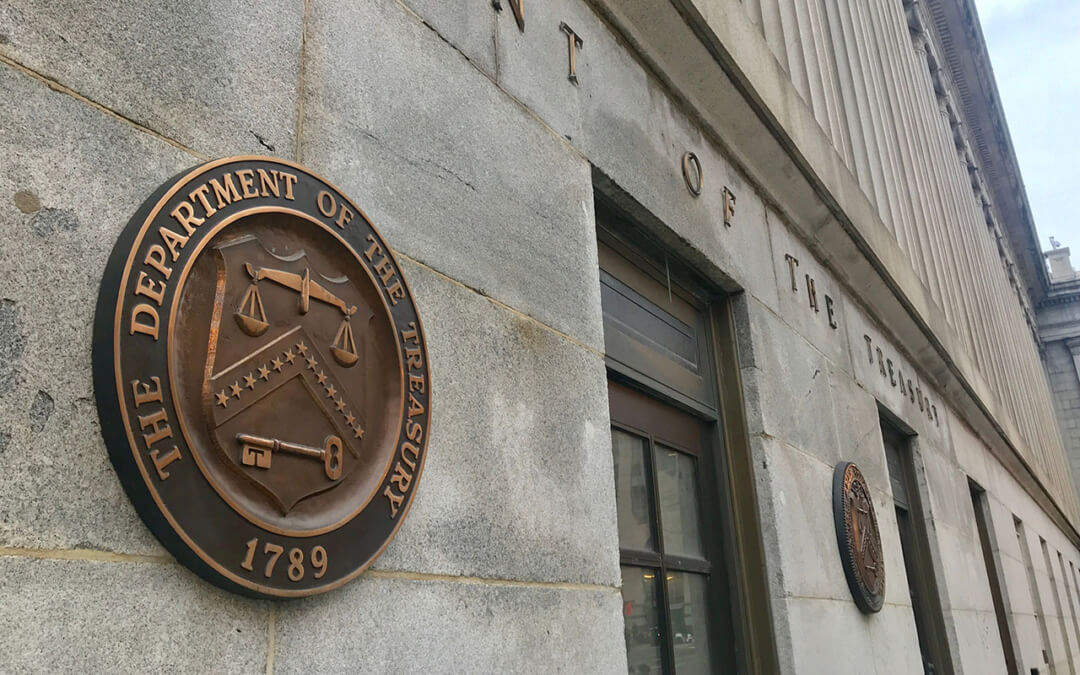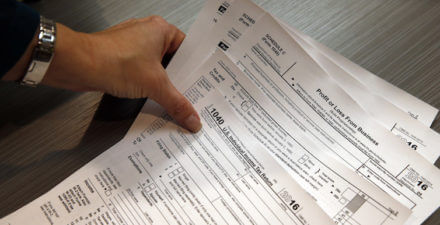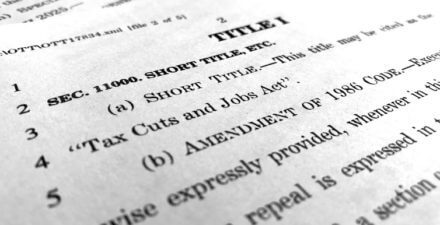Why cost-benefit analysis of tax regulations has failed, and how to fix it

When President Donald Trump signed the Tax Cuts and Jobs Act into law in December 2017, he kicked off an incredible period of regulatory activity at the U.S. Department of the Treasury and the IRS because the two agencies then had to clarify the meaning of the often-ambiguous new law. The regulations that the agencies subsequently issued define terms, detail calculations, and generally explain what the agencies understand the law to mean. In early 2018, while this process was going on, the Trump administration also expanded a requirement for cost-benefit analysis of tax regulations so that it applied to many more tax regulations than it had in the past.
More than 2 years later, it is clear this experiment in cost-benefit analysis of tax regulations has failed. In a new report released today, I document the shortcomings of the cost-benefit analyses issued for regulations implementing the Tax Cuts and Jobs Act, explain why those weaknesses are rooted in the framework for cost-benefit analysis mandated by the White House Office of Information and Regulatory Affairs, which oversees such analyses, and recommend an alternative approach for the analysis of tax regulations led by the Treasury Department.
The cost-benefit analyses released alongside regulations implementing the Tax Cuts and Jobs Act provide little information relevant to assessing the merits of those regulations. Evaluating the merits of a tax regulation requires assessing the impacts of that regulation on revenues and burden. Do the revenue losses prevented justify the tax burden imposed by a more stringent interpretation of the law, taking into account who would bear that tax burden? Or does the burden reduction, taking into account who would benefit, justify the revenue loss? The cost-benefit analyses that the Office of Information and Regulatory Affairs instructs agencies to produce cannot answer these questions.
Moreover, while tax experts criticize many TCJA regulations for providing unmerited windfalls to favored groups, the cost-benefit analyses for those regulations often fail to identify these windfalls or provide critical analysis of them. Regulatory giveaways in the interpretation of the new deduction for income from pass-through businesses, the tax on global intangible low-taxed income, and the base erosion and anti-abuse tax, for example, all were subject to little or no critical analysis.
If decision-makers within the Department of the Treasury and the IRS used these analyses to guide their regulatory choices, they would likely be making less informed choices than they would if they simply ignored the analyses.
The weaknesses of these analyses are rooted in the framework that the Office of Information and Regulatory Affairs mandates for the cost-benefit analysis of federal regulations. This framework is fundamentally ill-suited to the evaluation of tax regulations for two main reasons.
First, the framework treats revenue impacts as neither a cost nor a benefit even though raising revenues is the primary purpose of taxation. Lax regulatory interpretations that generate windfall gains for recipients often have few or no costs. Indeed, a regulation that simply gives up on preventing some form of corporate tax avoidance could generate net benefits in this framework because corporations would face a reduced cost of avoiding taxes, and the revenue loss itself would not be treated as a cost. Regulatory giveaways in the implementation of the Tax Cuts and Jobs Act probably avoided critical scrutiny in part because the analytic framework does not conceive of the revenue loss from those giveaways as a cost and thus does not focus attention on them.
Second, the framework relegates changes in the distribution of the tax burden to second-tier status. Though it may seem neutral to instruct the Treasury Department and the IRS to ignore changes in the distribution of the tax burden in assessing the costs and benefits of tax regulations, it is not. High-wealth taxpayers are generally better able to avoid paying taxes than low-wealth taxpayers. This framework thus puts a thumb on the scale for reallocating taxes from the wealthy to everybody else. The reduction in tax avoidance is deemed a benefit while changes in the distribution of the tax burden are deemed neither a cost nor a benefit. Indeed, though the framework for cost-benefit analysis is often described as disregarding redistributive impacts, it would be more accurate to say that it adopts a specific normative view on how to judge redistributive impacts.
By ignoring revenue and distributional impacts in assessing costs and benefits, this framework biases the analysis in favor of regulatory giveaways and against regulations that protect the tax base.
In light of this performance, the next administration should eliminate the requirement for cost-benefit analysis of tax regulations and the Office of Information and Regulatory Affairs’ authority to review that analysis. Instead, the Treasury Department should provide a qualitative and, when feasible, quantitative evaluation of tax regulations grounded in the fundamental considerations of tax policy: impacts on revenues, on the level and distribution of the tax burden, and on compliance costs. These tools are the analog of the cost-benefit framework, taking into account the distinct purpose of tax regulations.
The Department of the Treasury’s analysis of the impacts on revenues, burden, and compliance costs should focus on the decision points where the department and the IRS have discretion to regulate differently, as this is the analysis that would most directly inform regulatory decision-making, and the analysis should be conducted only when the relative impacts of different interpretations of the law are substantial.
In the current framework, cost-benefit analysis hides revenue-losing, inequality-increasing regulatory giveaways behind a technocratic veil. The reformed approach would provide decision-makers with the analysis necessary to make informed choices in service of broadly shared growth.
For more, read the full report.






